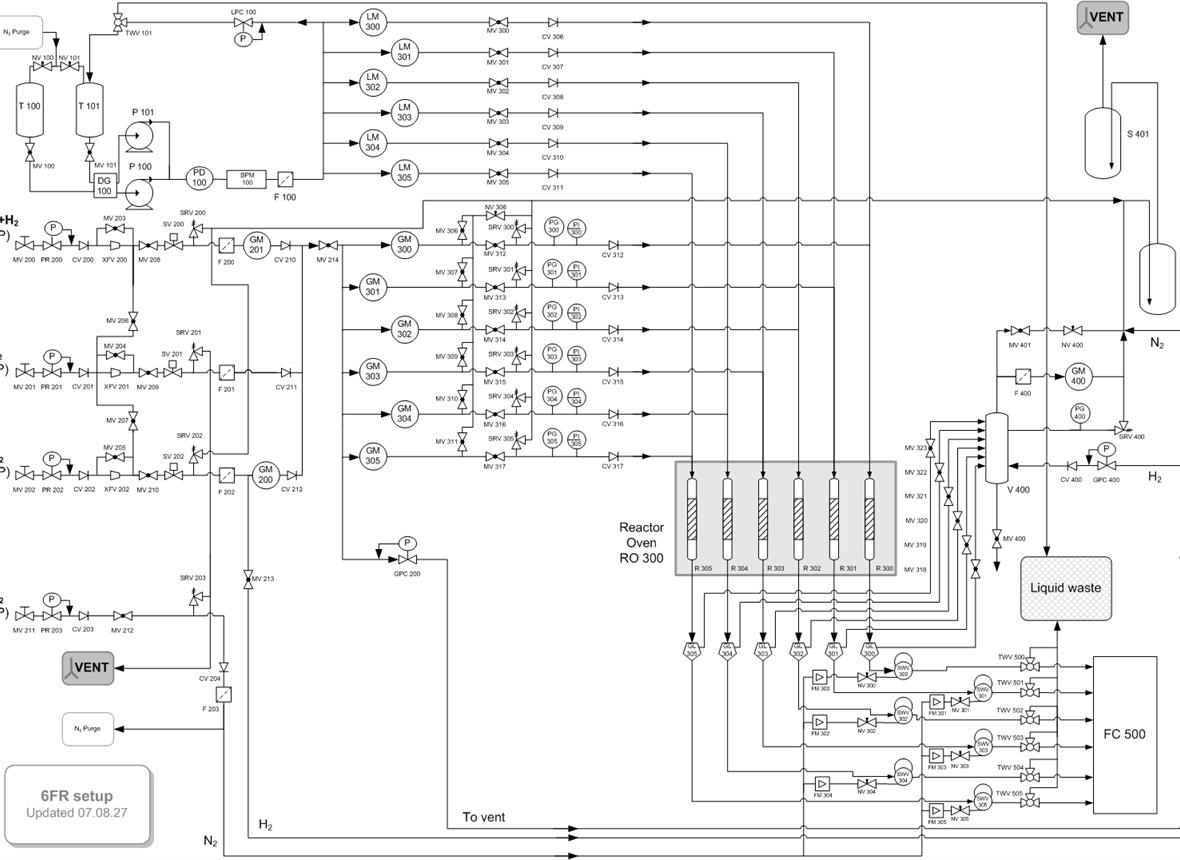
Hydroprocessing is a well-implemented and versatile refinery conversion strategy, comprising a wide array of reaction routes such as: (i) hydrotreating, aiming for the hydrogenation of unsaturated hydrocarbons and the removal (hydrogenolysis) of heteroatoms such as sulfur or nitrogen; (ii) hydrocracking, for promoting C–C bond scission and the partial saturation of aromatics; or (iii) hydrodeoxygenation, for the specific removal of oxygen moieties. In this project, we investigate the conversion of highly polyaromatic feedstock like heavy fuel oil (HFO), pyrolysis fuel oil (PFO), or bio-oils from different biomass sources (i.e., agricultural waste, algae) for quality improvement and obtaining products with higher added value.
We seek new (thermo-) catalytic strategies and improved heterogeneous catalysts with increased activity and stability. We put advanced analytical characterization techniques (i.e., nuclear magnetic resonance, high-res mass spectrometry) to work and combine their results with modeling and statistical tools.

The use of a three-phase plug-flow microreactor with powder catalysts to obtain intrinsic kinetics is reported. Our test reaction is the hydrogenation of biphenyl over a Pt-Pd/Al2O3 catalyst. We compare reaction rates obtained in both our microreactor and a standard hydrogenation autoclave. The reactor design consists of six parallel reactor tubes with an inner diameter of 2.2 mm and a maximum catalyst-bed length of 200 mm.
Co-flowing two phases very slowly over the bed needs more care than running only a liquid or a gas. Our main contribution in this work is to stress the impact of hydrodynamic anomalies, most importantly stagnant zones of gas and liquid, which occurred in reactor columns where diluent and catalyst were unevenly distributed. Such packing irregularities caused huge variations in conversion levels from tube to tube. In contrast, using a proper way to load the solids evenly, we could get the same results in each reactor tube. The values of these kinetic constants were identical to the ones we obtained in the autoclave. The well-known effect that too much dilution causes loss of conversion is found to be stronger than that in gas–solid systems. We visualized flow patterns in a 2-dimensional reactor mock-up and found such stagnant zones in segregated beds. Scaling down a continuous packed-bed reactor to reliably measure catalytic kinetics for gas–liquid–solid reactions is possible under specified conditions described herein.